The Adventure Of A Lifetime: Walking with Polar Bears
Text and photos by Heather Cline
| If you think back on experiences you have had during your life, there are likely a few that stand out for being unique, exciting, or impactful. I recently took a trip that I can say was all three of those things. It was a trip I had been dreaming of for decades; not only because it was sure to be an adventure, but also because the main reason for going was to see a species that has the potential to go extinct in my lifetime due to climate change: the polar bear. |
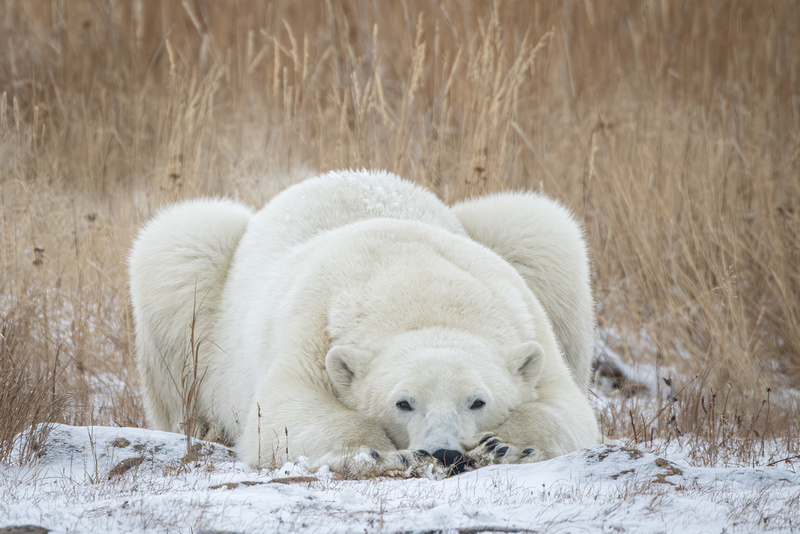 
|
This post is fifty percent about the experience of walking with polar bears and fifty percent what I learned about them while I was there. While there are different methods to view polar bears in the various regions that they live, this trip took place just north of Churchill, Manitoba in the Candian territories. Churchill is known as the polar bear capital of the world because thousands of bears migrate there every year to follow the pack ice to hunt seals. While there is no guarantee of seeing bears, the chances are quite good. |
| The most common way to see polar bears in Churchill is via a Tundra Buggy which is a modified bus with giant tires that allow tourists to safely view the bears while staying out of paws reach. We opted instead to do a walking safari that allowed us to be out among the bears in their natural environment. This 'safari' was 4 days long and all walks were with very experienced guides. There are so many amazing things I learned through watching, listening, and just being out on the tundra, I am sure I'll forget to include all of it here. |
|
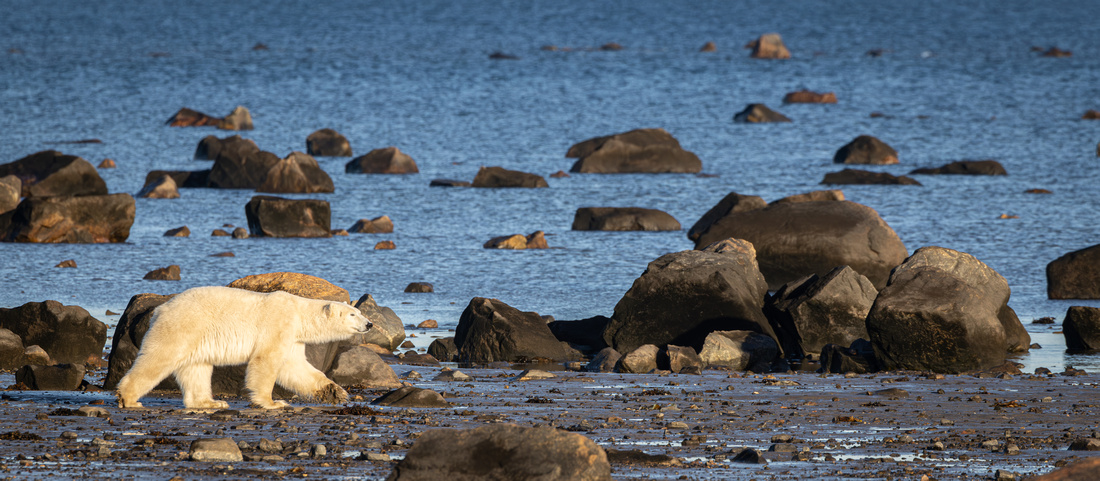 
|
|
Polar bears are marine mammals that were built to handle a hunting and fasting cycle. They may fast for up to four months then hunt seals when the sea ice returns in late autumn. The bears we saw on this trip were at the tail end of waiting for sea ice so they could end their fasting cycle and begin hunting. It was amazing to see how well fed they looked given they hadn't eaten for a third of the year.
But we learned of an adaptation this particular population has made to pack on a few extra pounds in the summer months. Between June and September, roughly 60,000 beluga whales migrate into the Hudson Bay. The polar bears walk out into the tidal flats at low tide and locate a large flat rock, then they wait for high tide. When the tide comes in, the polar bear has an excellent vantage point to see whales swimming close to the rock. They simply jump off the rock and capture their prey.
|
 
|
|
To allow us to handle the chilly temperatures and wind, we were outfitted with parkas, snow pants, and heavy-duty boots. These layered on top of wool thermals & socks, insulating fleece layers, gloves, and hats. Even with all this, each time we returned from a walk the entire group agreed we were cold!
|
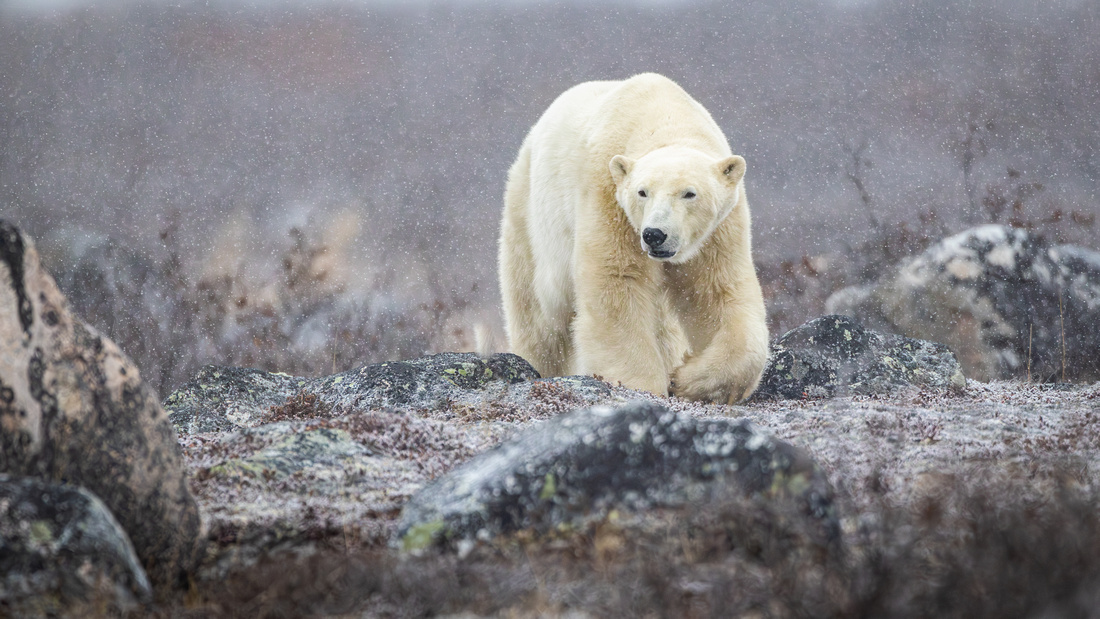

|
It's hard to imagine that any creature would be comfortable in such conditions but again, this is what polar bears are made for. They have a thick layer of fat and another two layers of thick dense fur that is hollow, increasing insulation by trapping air between the hairs. This fur even covers most of their paws.
|
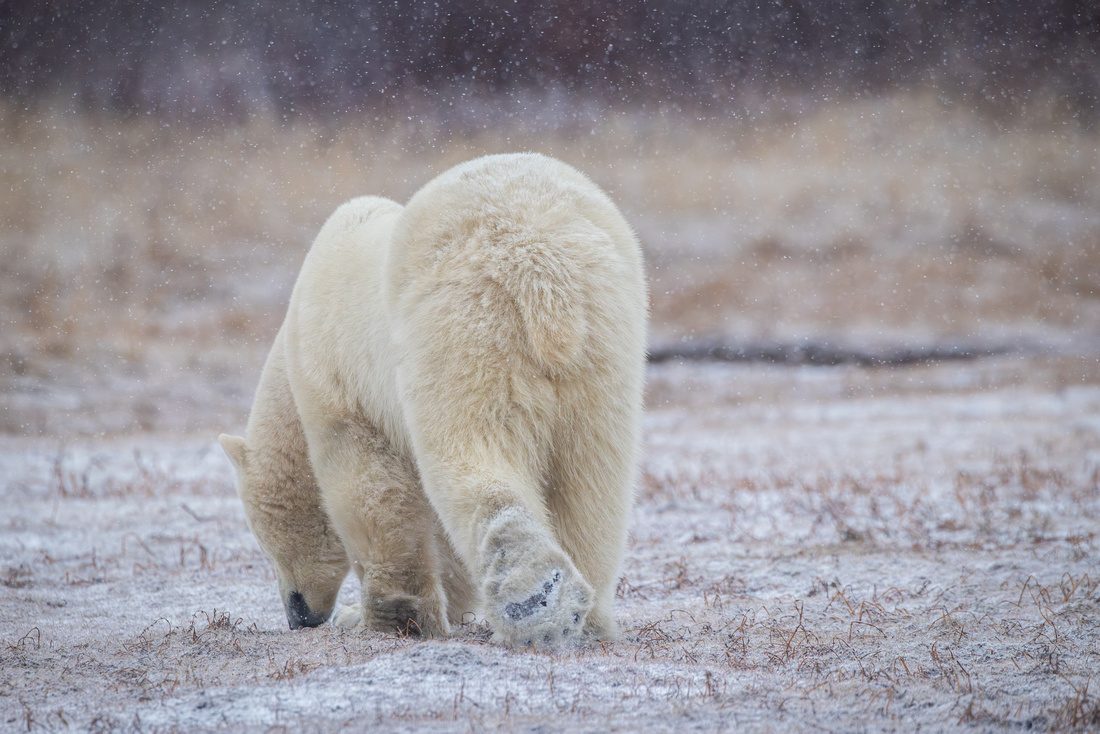

| You might think a polar bear has white fur but it's actually off white, roughly the shade of butter and their skin underneath all that fur is black! |
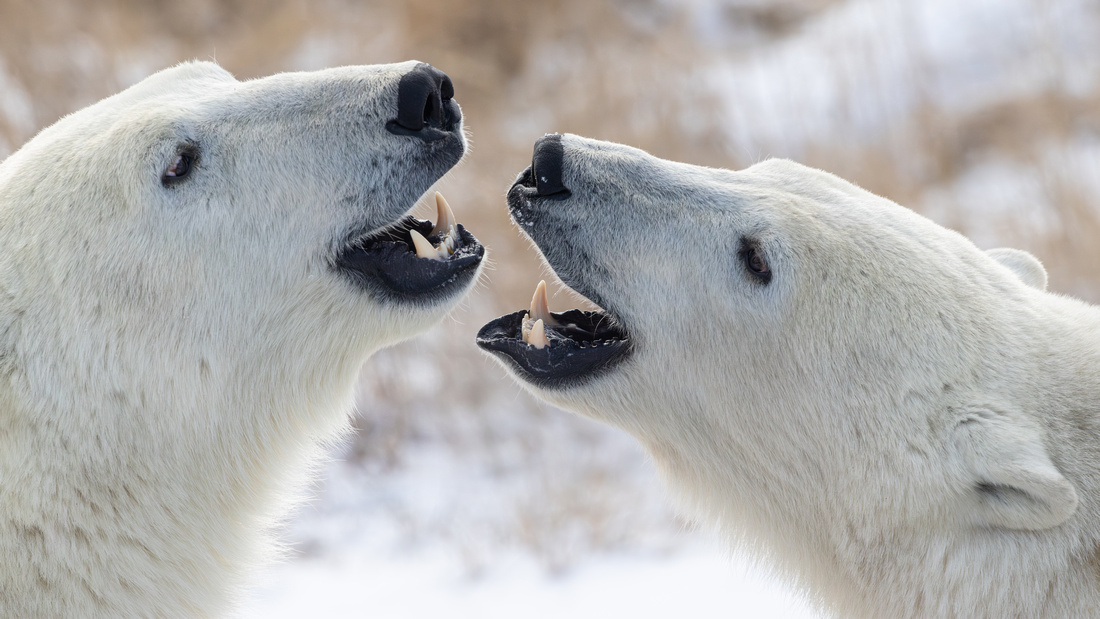

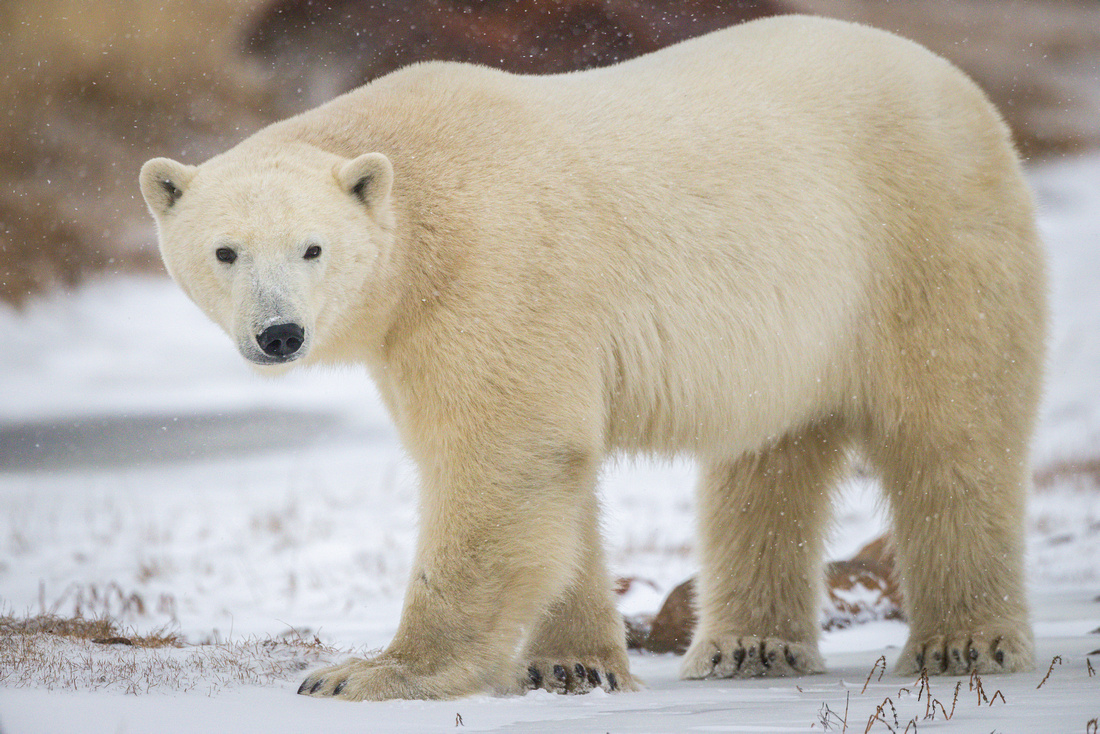 
|
Polar bears have an incredible sense of smell which they use to locate their prey. They can smell seals from up to 20 miles away! When I asked the crew at the lodge if the polar bears ever showed an interest in the food that was being cooked at the lodge, they reminded me that although the bears can smell the food, it isn't the food they eat so it doesn't really register. I thought this was a great reminder of why we should never feed wildlife.
|
|
Polar bears are normally solitary creatures, but we observed some males hanging out and sparing with each other. The guides nicknamed them Frick and Frack. A third bear decided to join in, so they named him Frock. It was a treat to watch them interact with each other. They were quite gentle and playful for the most part, even sleeping next to each other.
There are twenty populations of polar bears recognized across five countries. The overall status of polar bears is threatened under the Endangered Species Act (ESA) due to loss of sea ice which they rely on to hunt seals. With the current population estimated at just over 25,000 and their future uncertain, it was a true blessing to be able to observe this healthy and thriving population of bears in the wild.
|
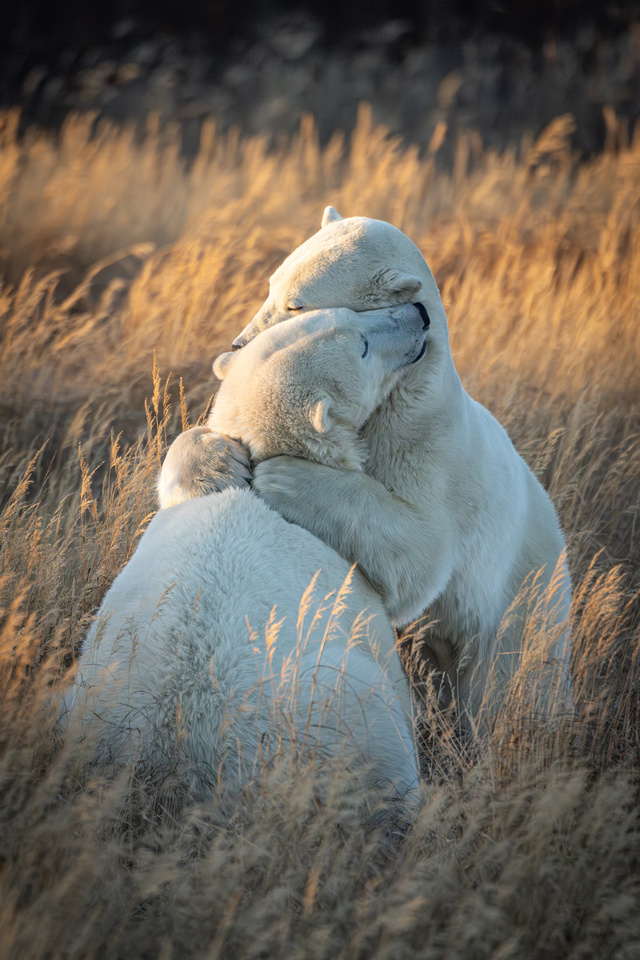 
|
Of course, now that I have managed to see them once I can't stop thinking of how to get out there to see them again! To see more photos of polar bears from this trip, please visit my gallery here.








